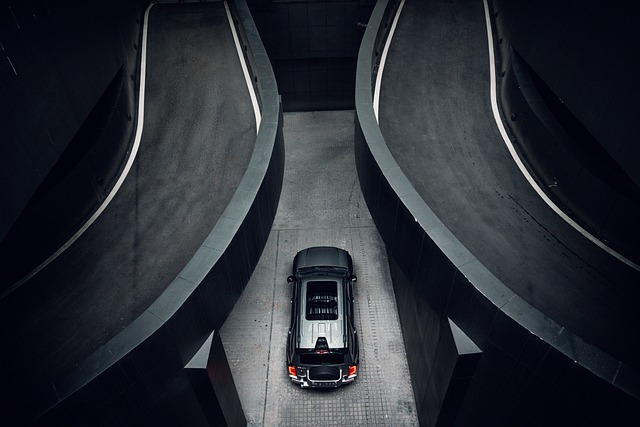
Tank Battles Drive Modern Gaming Culture
From the gritty realism of war simulations to the stylized chaos of mobile shooters, the tank has become a cultural icon in contemporary gaming. This armored giant, once a symbol of mechanized warfare, now carries the weight of storytelling, community building, and artistic expression. In an age where games are no longer just pastimes but platforms for shared experience, the tank’s presence reflects broader trends in entertainment, social interaction, and technology.
The Evolution of the Tank in Video Games
Early arcade titles like Battlezone introduced players to a first-person view of a 3D tank navigating a maze of obstacles. The limited hardware of the time made the design of a tank a straightforward way to convey firepower and protection. As console power grew, developers began to layer depth—adding terrain, enemy types, and strategic elements that made tank gameplay feel more like a tactical dance.
- 1980s: 2D tank shooters that focused on arcade-style reflexes.
- 1990s: Real-time strategy games featuring large fleets of tanks in global conflicts.
- 2000s: First-person shooters with detailed tank classes, balancing accuracy and mobility.
- 2010s: Cross-platform titles that blended competitive multiplayer with narrative depth.
The Art of Balancing Power and Vulnerability
Every tank in a game is a study in trade-offs. Designers must decide how heavy armor, how fast the vehicle moves, and how devastating its weapons can be. These choices shape not only gameplay but also community expectations. A tank that is too powerful can dominate matches, eroding the sense of competition, while one that is too fragile can feel like a joke.
“The best tank feels like an extension of the player’s will, not a weapon that forces a play style,” says a veteran game designer who has worked on several tactical shooters.
Culture Around Tank Gaming Communities
Online forums, Discord servers, and streaming platforms have created tight-knit communities centered on tank games. Fans share strategies, analyze patches, and celebrate in-game achievements. These interactions foster a sense of belonging that transcends the digital realm. The shared lexicon—terms like “line of sight,” “flank,” and “suppress”—has seeped into everyday language among enthusiasts.
Influencers and streamers often adopt tank-centric personas, wearing themed gear, customizing their in-game avatars, and even producing fan art that celebrates the mechanical elegance of armored vehicles. In some circles, a well-executed tank playstyle can elevate a player to meme status, while missteps become fodder for lighthearted teasing.
How Mods Expand the Tank Experience
Modding communities have turned classic titles into living, breathing ecosystems. Players create new tank models, adjust physics, and design entire campaigns that rival official releases. Modded content often preserves the core mechanics of the original game while adding layers of personalization.
- Custom skins that give tanks a retro-futuristic aesthetic.
- Physics tweaks that make tank movement feel more realistic.
- New map designs that emphasize strategic positioning.
The Economic Impact of Tank-Heavy Games
From sales figures to esports prize pools, tank-based titles have carved a lucrative niche in the gaming industry. Mobile titles featuring tank battles routinely rack up millions in revenue through microtransactions, while console franchises invest heavily in downloadable content to keep players engaged.
Esports tournaments for games like World of Tanks attract thousands of viewers worldwide, with professional teams training for hours a day. Sponsorship deals, merchandise, and broadcast rights contribute to a multi-million-dollar ecosystem that thrives on the thrill of armored combat.
Cross-Platform Collaboration and Integration
Some developers have embraced cross-platform play, allowing users on different consoles or devices to compete together. This strategy broadens the player base and encourages a more diverse set of strategies. In addition, social media integration lets players share clips of dramatic tank maneuvers, creating a viral loop that drives engagement.
Technological Advances Shaping Future Tank Games
Virtual reality and augmented reality are set to redefine how players experience tank warfare. VR headsets can immerse players inside a cockpit, letting them feel the rumble of artillery and the weight of heavy armor. AR overlays on smartphones or smart glasses can project tank models onto real-world environments, blurring the line between simulation and reality.
Machine learning is also improving AI opponents, allowing them to learn from player strategies and adapt in real time. This makes each tank encounter feel fresh, reducing repetition and keeping the gameplay loop engaging.
Environmental and Ethical Considerations
Some creators are using tank games to explore themes of conflict and peace. By simulating realistic battle scenarios, they highlight the human cost of warfare and the importance of strategic thinking. Games that emphasize diplomacy, resource management, and negotiation around tank deployment provide players with alternative ways to engage with conflict.
Future Trends and Cultural Significance
The tank’s enduring presence in gaming underscores its role as a metaphor for resilience, power, and adaptability. As game development continues to push technological boundaries, the tank remains a constant—an emblem of mechanical ingenuity and strategic depth. Whether in a nostalgic tribute to classic shooters or a cutting-edge VR simulation, the tank will continue to shape modern entertainment culture, influencing how we play, connect, and imagine the future of conflict and cooperation.

